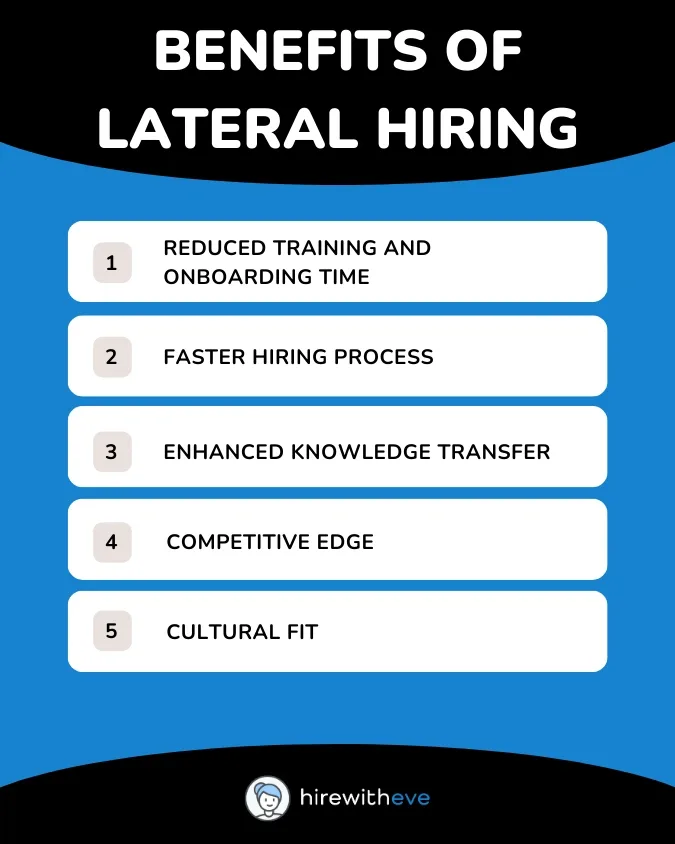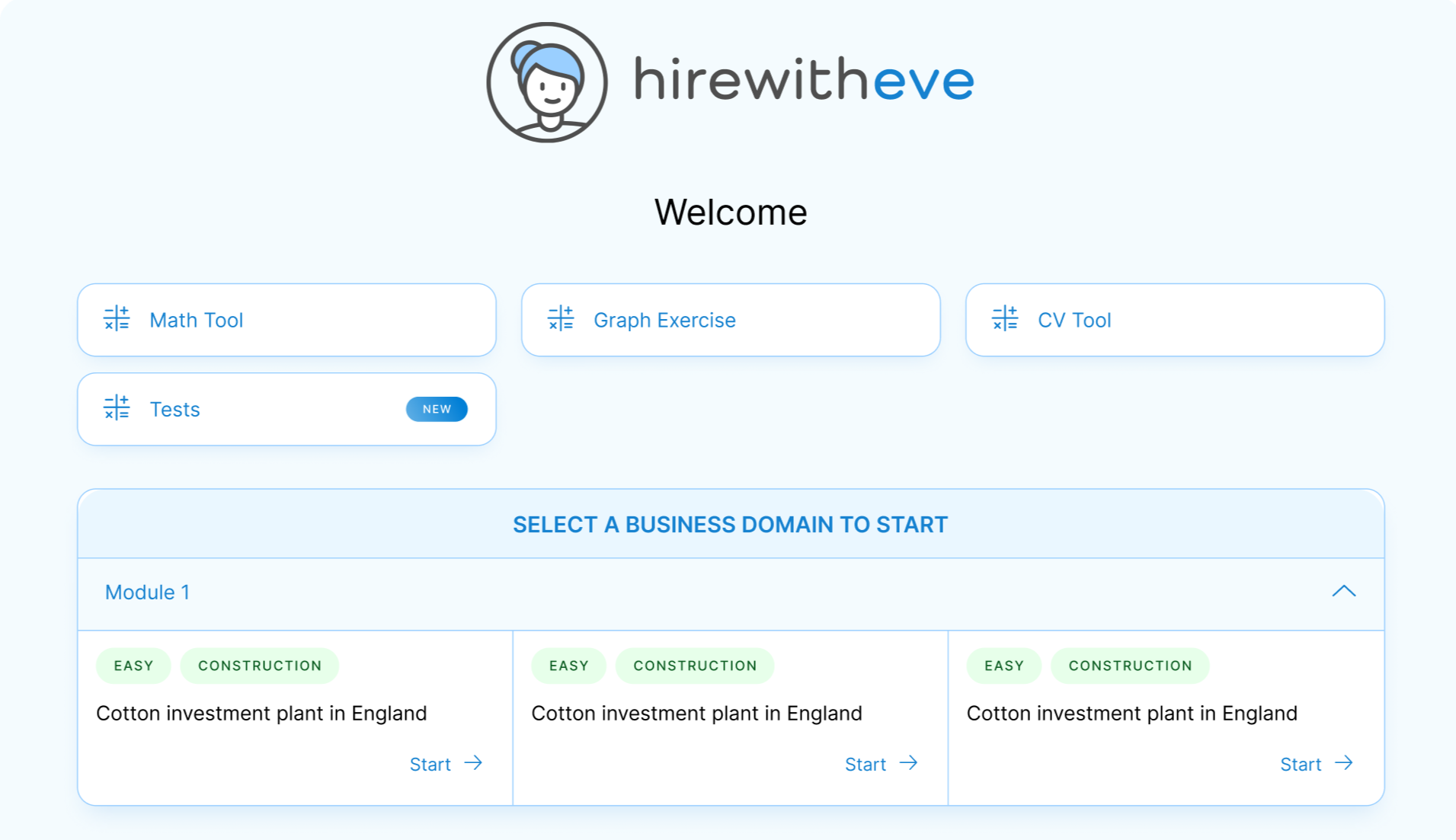What is Lateral Hiring? All You Need to Know

In today's competitive business environment, companies are continually seeking efficient ways to bring in the best talent. One approach that has gained considerable traction is lateral hiring. But what exactly does this term mean?
Lateral hiring is the process of recruiting individuals from a similar role at another company, often within the same industry. Unlike traditional hiring methods, where companies might focus on candidates at entry-level or higher positions, lateral hiring targets professionals who have already gained expertise in their field and can seamlessly transition into the new role with minimal training.
For talent acquisition specialists and HR managers, understanding and effectively implementing lateral hiring strategies is critical to staying competitive and finding the right talent quickly.
Table of contents
What is Lateral Hiring?
Lateral hiring refers to the recruitment of professionals from other organizations, often within the same industry, who are in a similar position or level. Unlike traditional hiring, which focuses on bringing in candidates for entry-level or high-level leadership roles, lateral hiring targets individuals who have already proven their skills and abilities in a similar role at another company.
This type of hiring allows businesses to bring in new employees who are not only familiar with the industry but are also already proficient in the role’s responsibilities. For instance, a company might engage in lateral hiring when they need to fill mid-level management roles or specialized technical positions. These hires are expected to require little to no additional training because they already possess the skills and experience necessary to succeed in the role.
In short, lateral hiring is about recruiting individuals who can provide immediate value by transferring their knowledge and experience from their current or previous job into a new but similar position within your company.
What are the Benefits of Lateral Hiring?
Lateral hiring offers several distinct advantages, making it an attractive option for businesses aiming to fill specific roles with experienced professionals.
Here are some key benefits:

Reduced Training and Onboarding Time
When a company engages in lateral hiring, they are bringing in individuals who already possess the required skills and expertise. This means that the new hires can quickly acclimate to the role and begin contributing right away. HR teams save valuable time and resources that would otherwise be spent on training and onboarding fresh talent.
Faster Hiring Process
Since candidates hired through lateral hiring already have experience in a similar role, there’s often less need for extensive evaluation processes. This streamlined process allows businesses to fill urgent vacancies more rapidly.
Enhanced Knowledge Transfer
Lateral hiring also brings the benefit of knowledge sharing. When professionals transition laterally into a new company, they bring with them insights, best practices, and industry knowledge from their previous employer. This creates a cross-pollination of ideas that can drive innovation and improvement within the organization.
Competitive Edge
Companies that engage in lateral hiring often gain an edge over competitors, especially when acquiring top talent from rival firms. These individuals not only understand the industry but also possess unique knowledge about competitor strategies, which can prove invaluable for business growth and strategic decision-making.
Cultural Fit
Since lateral hires have experience working within the same industry, they are more likely to understand the unique culture and demands of the role. This can lead to smoother transitions and a higher likelihood of long-term retention, as employees adapt easily to their new workplace culture.
What are the Challenges in Lateral Hiring?
While lateral hiring offers numerous benefits, it is not without its challenges.
Here are some common issues HR managers and talent acquisition specialists should be aware of:
Competition for Top Talent
Since lateral hiring often targets experienced professionals, companies may find themselves in a bidding war for top talent. Other organizations might offer higher compensation, better benefits, or more appealing perks to secure the candidate. Talent acquisition teams need to have a clear strategy to stand out in a competitive hiring landscape.
Compensation Expectations
Lateral hires typically come with higher salary expectations due to their experience and expertise. Companies must weigh the cost of these increased salaries against the value the individual will bring to the organization.
Cultural Integration
While lateral hires often come with industry experience, it doesn't necessarily mean they will fit seamlessly into the new company's culture. Ensuring that the candidate aligns with the organization's values and work environment is critical for long-term success.
Non-Compete Clauses and Legal Issues
Lateral hiring from competitors can sometimes raise legal concerns. Non-compete clauses and confidentiality agreements can limit the candidate's ability to bring certain knowledge or practices to their new role. HR teams must navigate these issues carefully to avoid potential legal ramifications.
What are the Effective Strategies for Lateral Hiring?
Given both the advantages and challenges, HR managers and talent acquisition specialists need to adopt effective strategies when implementing lateral hiring.
Here are some key approaches to consider:
Building a Strong Employer Brand
One of the most effective ways to attract lateral hires is by building a strong employer brand. Talented professionals are more likely to consider opportunities at companies with a positive reputation in the industry. HR teams can showcase company values, work culture, and growth opportunities through social media, corporate websites, and industry events.
Networking and Referrals
Many successful lateral hires come from personal recommendations or professional networks. Encouraging employee referrals and participating in industry networking events can help companies identify and recruit top talent. A well-established referral program can be a valuable asset in lateral hiring efforts.
Industry-Specific Job Boards and Platforms
Posting job openings on industry-specific job boards and platforms allows HR teams to target professionals who are actively seeking new opportunities in their field. These platforms are particularly useful for finding candidates with niche skills that are essential for lateral hiring.
Active Talent Pipelines
Keeping an active pipeline of potential candidates is crucial for lateral hiring. This involves identifying and engaging with professionals who may not be looking for a job at the moment but could be open to a new opportunity in the future. By maintaining relationships with these individuals, HR teams can act quickly when a lateral hire is needed.
Flexible Compensation and Benefits Packages
Given that compensation expectations can be higher for lateral hires, companies should consider offering flexible packages that go beyond salary. Benefits such as remote work options, professional development opportunities, and performance-based bonuses can make an offer more attractive.
Conclusion
Incorporating the right tools can significantly enhance your lateral hiring strategy. This is where platforms like HirewithEve come into play. HirewithEve provides a range of features that can streamline the hiring process and help HR managers make more informed decisions when seeking lateral hires.
Skills-Based Assessments: HirewithEve allows companies to assess candidates based on their skills, which is critical in lateral hiring. Instead of focusing solely on resumes or titles, the platform enables talent acquisition specialists to identify candidates who possess the specific expertise needed for the role.
Data-Driven Insights: The platform offers analytics and insights to help HR managers make data-driven hiring decisions. This can be particularly useful in evaluating the effectiveness of your lateral hiring strategy and identifying areas for improvement.
Applicant Tracking System (ATS) Integration: HirewithEve integrates with ATS platforms, making it easier for HR teams to manage and track candidates throughout the hiring process. This feature is essential for keeping lateral hiring efforts organized and efficient.
Remote Hiring Support: Since lateral hires can often come from different geographical locations, HirewithEve’s remote hiring capabilities make it easier to source and hire talent from anywhere, without geographical limitations.
In conclusion, lateral hiring is a powerful strategy for companies looking to bring in experienced professionals quickly and efficiently. By leveraging tools like HirewithEve, HR managers and talent acquisition specialists can enhance their lateral hiring process, ensuring that they find the best candidates for their organization while reducing time-to-hire and increasing retention rates.
Target Your Talent
Unlock tailored solutions for your recruitment and hiring needs with Eve Platform's extensive case study library.
Subscribe now to enhance your HR expertise and excel in your role.
Free Resources

Transforming Hiring: 7 Key Recruiting Metrics
Enhancing recruitment processes with data-driven insights for better hiring outcomes.

Reducing Hiring Bias with Hirewitheve.
Utilizing Hirewitheve to combat bias and streamline recruitment processes effectively.

Hiring Detail-Oriented Candidates
HirewithEve enhances hiring by accurately assessing candidate's attention to detail-oriented.








